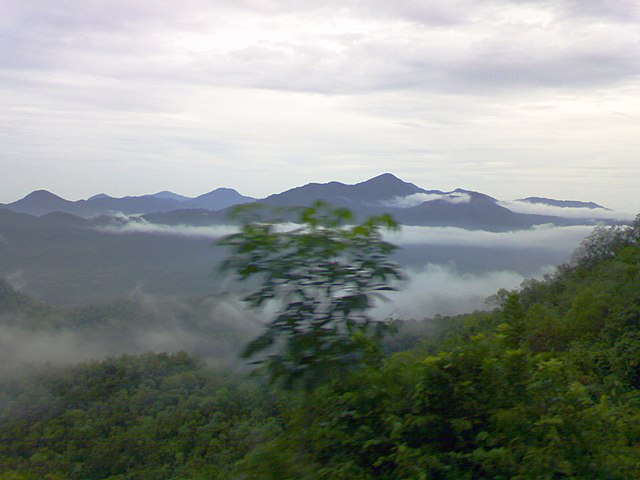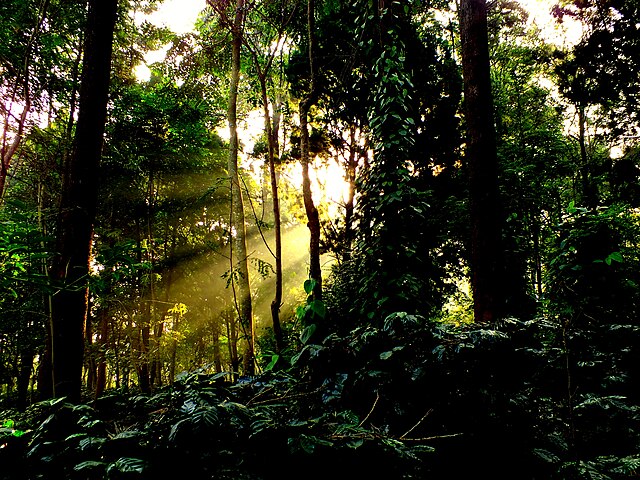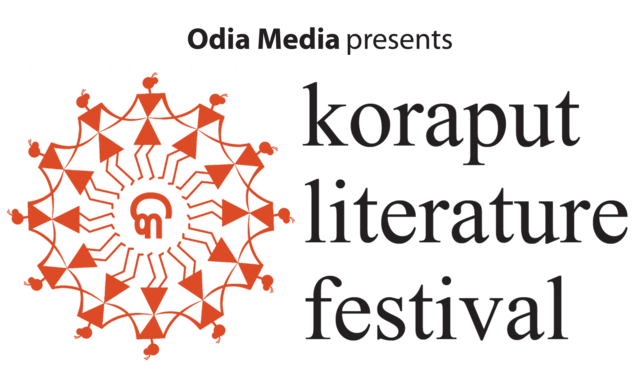Nestled in the southern part of Odisha, Koraput stands as one of India’s most enchanting yet underexplored destinations. This hidden gem offers travelers an authentic glimpse into tribal culture, breathtaking natural beauty, and rich historical heritage that remains largely untouched by mass tourism. If you’re seeking an off-the-beaten-path adventure that combines cultural immersion with stunning landscapes, Koraput should definitely be on your travel radar.
What Makes Koraput Special?
Geographic Location and Climate
Koraput district is strategically positioned in southern Odisha, sharing borders with Andhra Pradesh and Chhattisgarh. This unique location creates a fascinating confluence of different cultural influences while maintaining its distinct identity. The region sits at an average elevation of 900 meters above sea level, which explains its pleasantly cool climate compared to other parts of Odisha.
The district experiences a tropical highland climate with three distinct seasons. Summers are mild and comfortable, monsoons bring abundant rainfall that transforms the landscape into a lush green paradise, and winters offer crisp, clear days perfect for exploration. This favorable climate makes Koraput an ideal year-round destination for nature lovers and culture enthusiasts alike.
Cultural Significance and Heritage
What truly sets Koraput apart is its incredible cultural diversity. Home to over 62 different tribal communities, this region represents one of the most ethnically diverse areas in India. Each tribe brings its own unique traditions, languages, art forms, and customs, creating a living museum of human culture that has remained largely unchanged for centuries.
The tribal communities here have successfully preserved their ancestral ways of life, from traditional farming methods to ancient art forms. This cultural preservation isn’t just about maintaining old customs – it’s about living heritage that continues to evolve while staying true to its roots.
Historical Background of Koraput
Ancient Roots and Tribal Heritage
Koraput’s history stretches back thousands of years, with archaeological evidence suggesting human habitation dating to the Paleolithic era. The region’s tribal communities represent some of India’s oldest indigenous populations, maintaining oral traditions that preserve stories and customs from time immemorial.
These tribal societies developed sophisticated systems of governance, agriculture, and social organization long before external influences arrived. Their deep connection to the land and sustainable living practices offer valuable lessons for modern environmental conservation efforts.
Colonial Era and Modern Development
During British rule, Koraput remained relatively isolated due to its challenging terrain and strong tribal resistance to outside interference. This isolation, while limiting economic development, helped preserve the region’s unique cultural identity.
Post-independence development has been carefully balanced to improve living standards while respecting traditional ways of life. Modern infrastructure projects focus on sustainable development that benefits local communities without disrupting their cultural fabric.
Top Tourist Attractions in Koraput

Deomali Peak: Odisha’s Highest Point
Standing majestically at 1,672 meters above sea level, Deomali Peak holds the distinction of being Odisha’s highest mountain. The trek to the summit rewards adventurers with panoramic views that stretch across three states – Odisha, Andhra Pradesh, and Chhattisgarh.
The peak offers different experiences throughout the year. During monsoons, the surrounding hills are draped in mist and verdant greenery, while winter months provide crystal-clear views extending to the horizon. The trek itself is moderately challenging, making it accessible to reasonably fit travelers while still providing a sense of adventure and accomplishment.
Jagannath Temple Complex
The ancient Jagannath Temple in Koraput town represents the region’s deep spiritual traditions. Unlike the famous temple in Puri, this smaller complex offers a more intimate spiritual experience where visitors can observe local worship practices and architectural styles unique to the region.
The temple’s architecture reflects local artistic traditions while maintaining the essential elements of Odishan temple design. The complex serves as a community gathering place where locals celebrate festivals and maintain age-old religious practices.
Tribal Museums and Cultural Centers
Anthropological Museum
The Anthropological Museum in Koraput serves as an excellent introduction to the region’s diverse tribal cultures. The museum houses an impressive collection of tribal artifacts, traditional costumes, musical instruments, and everyday objects that tell the story of how different communities have adapted to their environment over centuries.
Interactive displays help visitors understand the complexity and sophistication of tribal societies, challenging common misconceptions about indigenous communities. The museum’s educational programs provide deeper insights into tribal philosophy, environmental knowledge, and social structures.
Tribal Research Institute
The Tribal Research Institute conducts ongoing studies of local communities while serving as a resource center for visitors interested in learning about tribal cultures. The institute’s library contains rare manuscripts, research papers, and documentation of tribal languages and customs.
Visitors can arrange guided tours and lectures that provide academic perspectives on tribal life while respecting community privacy and cultural sensitivities.
Natural Wonders and Scenic Beauty
Waterfalls and Scenic Spots
Duduma Falls
Duduma Falls represents one of Koraput’s most spectacular natural attractions. The waterfall plunges from a height of 175 meters, creating a mesmerizing display of power and beauty. The surrounding landscape offers excellent opportunities for photography and nature observation.
The falls are particularly impressive during and immediately after the monsoon season when water volume is at its peak. However, even during drier months, the cascading water creates beautiful pools perfect for a refreshing dip.
Bagra Falls
Less crowded than Duduma Falls, Bagra Falls offers a more secluded experience for those seeking tranquility. The waterfall is surrounded by dense forest, providing excellent opportunities for bird watching and nature photography.
The trek to Bagra Falls takes visitors through diverse ecosystems, from cultivated terraces to dense jungle, showcasing the region’s incredible biodiversity. Local guides can point out medicinal plants, rare birds, and other natural wonders along the way.
Wildlife Sanctuaries and National Parks
Koraput’s forests are home to diverse wildlife including leopards, elephants, various deer species, and hundreds of bird species. The region’s wildlife sanctuaries protect these ecosystems while providing controlled access for nature enthusiasts and researchers.
Conservation efforts focus on community-based approaches that involve local tribal communities as guardians of their ancestral forests. This collaborative approach has proven more effective than traditional top-down conservation methods.
Tribal Culture and Traditions
Indigenous Communities
Koraput’s tribal communities each maintain distinct identities while sharing common values of environmental stewardship and community cooperation. The Kondh, Gadaba, Paroja, and other tribes have developed unique adaptations to their specific environments.
These communities practice sustainable agriculture, traditional medicine, and complex social systems that have maintained social harmony for generations. Their knowledge systems offer valuable insights into sustainable living practices that modern society is only beginning to appreciate.
Traditional Arts and Crafts
Tribal artisans create beautiful handwoven textiles, intricate jewelry, wooden sculptures, and metal crafts using techniques passed down through generations. Each community has signature styles and motifs that reflect their unique cultural identity.
Purchasing authentic tribal crafts directly from artisans provides visitors with meaningful souvenirs while supporting traditional livelihoods. Many cooperatives have been established to ensure fair compensation for artists while maintaining quality standards.
Festivals and Celebrations
Tribal festivals in Koraput are vibrant celebrations that combine spiritual devotion, community bonding, and cultural expression. These events often involve elaborate dances, music performances, and traditional food preparation that brings entire communities together.
Major festivals follow agricultural cycles, celebrating planting seasons, harvests, and natural phenomena. Visitors who time their trips to coincide with these celebrations gain unprecedented insights into tribal spiritual and social life.
Adventure Activities and Outdoor Recreation

Trekking and Hiking Opportunities
Koraput’s mountainous terrain offers numerous trekking opportunities for adventurers of all skill levels. Trails wind through dense forests, across mountain ridges, and alongside pristine streams, providing diverse landscapes and challenges.
Popular trekking routes include the Deomali Peak trek, village-to-village hiking trails that pass through tribal settlements, and forest circuits that offer excellent wildlife viewing opportunities. Local guides ensure safety while providing cultural and natural history insights.
Wildlife Photography
The region’s diverse ecosystems support an incredible variety of wildlife, making it a paradise for wildlife photographers. Early morning and evening hours offer the best opportunities for spotting larger mammals, while the diverse bird life provides excellent subjects throughout the day.
Photographers should respect wildlife and local customs, maintaining appropriate distances and avoiding flash photography that might disturb animals or sacred sites. Local guides can help identify prime photography locations while ensuring ethical practices.
Local Cuisine and Food Culture
Traditional Tribal Dishes
Koraput’s cuisine reflects the region’s tribal heritage and agricultural abundance. Traditional dishes emphasize locally grown ingredients including various millets, indigenous vegetables, and forest products that provide both nutrition and unique flavors.
Staple foods include finger millet (ragi) preparations, bamboo shoot curries, and various leafy greens that grow wild in the forests. These dishes are typically prepared using traditional cooking methods that enhance natural flavors while requiring minimal processing.
Popular Local Restaurants
While fine dining options are limited, several local establishments serve authentic regional cuisine prepared by tribal cooks who understand traditional recipes and techniques. These restaurants often source ingredients directly from local farmers and foragers.
Homestay programs offer the most authentic culinary experiences, allowing visitors to participate in meal preparation while learning about traditional cooking methods and ingredient selection from local families.
Accommodation Options
Budget-Friendly Stays
Budget travelers will find several options including government guesthouses, youth hostels, and simple lodges that provide clean, basic accommodation at reasonable prices. These facilities often offer the added benefit of connecting travelers with local guides and activity organizers.
Many budget accommodations are located within walking distance of major attractions and provide easy access to local transportation options. Staff at these facilities typically have excellent knowledge of local attractions and can help arrange tours and activities.
Luxury Resorts and Hotels
For travelers seeking more comfort, several eco-resorts and boutique hotels offer upscale accommodation while maintaining environmental sensitivity. These establishments often feature traditional architecture and locally sourced materials that blend harmoniously with the natural environment.
Luxury accommodations frequently offer comprehensive tour packages, spa services using traditional healing techniques, and gourmet meals featuring local ingredients prepared by skilled chefs who understand regional cuisines.
Transportation and How to Reach Koraput
By Air, Train, and Road
The nearest airport to Koraput is Visakhapatnam Airport, approximately 230 kilometers away. Regular flights connect Visakhapatnam to major Indian cities, and taxi services provide comfortable transfers to Koraput.
Koraput Railway Station connects the district to major cities including Bhubaneswar, Kolkata, and Visakhapatnam. The train journey offers scenic views of rural Odisha and provides an economical travel option for budget-conscious travelers.
Road connectivity has improved significantly in recent years, with well-maintained highways connecting Koraput to neighboring states and major cities. Private vehicles and bus services provide flexibility for travelers who prefer road travel.
Local Transportation
Within Koraput, local buses, auto-rickshaws, and taxi services provide transportation to various attractions. Many visitors prefer hiring local guides with vehicles who provide transportation while sharing knowledge about local culture and history.
Bicycle rentals are available for environmentally conscious travelers who enjoy exploring at a slower pace while minimizing their environmental impact. Many attractions are accessible by bicycle, and the mild climate makes cycling comfortable year-round.
Best Time to Visit Koraput
Seasonal Considerations
The optimal time to visit Koraput depends on personal preferences and planned activities. October through March offers pleasant weather with cool temperatures and clear skies ideal for outdoor activities and sightseeing.
Monsoon season (June through September) transforms the landscape into a lush green paradise with waterfalls at their most spectacular. However, heavy rains can make some outdoor activities challenging and may limit access to certain remote areas.
Weather Patterns
Koraput’s highland location moderates temperatures year-round, with summer highs rarely exceeding 30°C and winter lows typically staying above 10°C. This comfortable climate makes the region suitable for travel throughout the year.
Rainfall patterns are predictable, with the majority of precipitation occurring during monsoon months. Post-monsoon months offer the most favorable conditions with comfortable temperatures, clear skies, and lush vegetation.
Shopping and Souvenirs
Local Markets and Handicrafts
Koraput’s markets offer authentic tribal handicrafts including handwoven textiles, wooden carvings, metal jewelry, and traditional musical instruments. These items represent genuine artistic traditions rather than mass-produced tourist souvenirs.
Weekly tribal markets provide the most authentic shopping experiences where visitors can purchase directly from artisans while observing traditional trading practices. These markets also offer fresh local produce and traditional foods.
Authentic Tribal Artifacts
Collectors of authentic cultural artifacts will find unique pieces including traditional costumes, ceremonial objects, and household items that represent centuries of tribal craftsmanship. Purchasing these items helps support traditional artisans while preserving cultural practices.
Buyers should ensure they’re purchasing from legitimate sources and understand any restrictions on transporting cultural artifacts. Many cooperatives provide certificates of authenticity and information about the cultural significance of purchased items.
Travel Tips and Essential Information
Safety Guidelines
Koraput is generally safe for travelers, but visitors should respect local customs and follow basic safety precautions. Inform local authorities about trekking plans, travel with reputable guides in remote areas, and carry adequate supplies for outdoor activities.
Cultural sensitivity is particularly important when visiting tribal communities. Obtain permission before photographing people, respect sacred sites and ceremonies, and follow guidance from local hosts regarding appropriate behavior.
What to Pack
Essential items for Koraput travel include comfortable walking shoes, lightweight rain gear, sunscreen, insect repellent, and layers for varying temperatures. Outdoor enthusiasts should bring appropriate gear for their planned activities.
Medical supplies should include basic first aid items, any personal medications, and water purification tablets for remote areas. While medical facilities are available in town, remote areas may require self-sufficiency for minor health issues.
Conclusion
Koraput represents everything that makes travel truly transformative – authentic cultural experiences, stunning natural beauty, and the opportunity to step outside our comfort zones while gaining new perspectives on life. This remarkable destination offers travelers the chance to witness living traditions that have survived thousands of years while enjoying some of India’s most spectacular landscapes.
Whether you’re drawn by the promise of cultural immersion, outdoor adventure, or simply the desire to explore somewhere genuinely different, Koraput delivers experiences that will stay with you long after you return home. The region’s careful balance of preserving tradition while embracing sustainable development offers hope for the future of cultural tourism.
As you plan your visit to this hidden gem, remember that you’re not just a tourist but a cultural ambassador. Your respectful engagement with local communities and environment helps ensure that future generations can continue to enjoy and learn from this remarkable corner of India.
Frequently Asked Questions
Q1: Is it safe for solo travelers to visit Koraput?
Koraput is generally safe for solo travelers, including women, though it’s advisable to inform local authorities about your travel plans and use reputable guides when visiting remote areas. The tribal communities are known for their hospitality, but respecting local customs and seeking advice from locals helps ensure a smooth experience.
Q2: Do I need special permits to visit tribal areas in Koraput?
Most areas in Koraput are accessible to tourists without special permits. However, some remote tribal villages may require permissions from local authorities. It’s best to check with the district collector’s office or tourism department upon arrival for current regulations and recommended procedures.
Q3: What languages are spoken in Koraput, and will I face communication barriers?
While over 60 tribal languages are spoken in the region, Hindi and Odia are widely understood. English is spoken by educated locals and those in the tourism industry. Learning a few basic phrases in Hindi or Odia can greatly enhance your interactions with local people.
Q4: How many days should I plan for a comprehensive Koraput visit?
A minimum of 4-5 days allows you to see major attractions and get a taste of tribal culture. However, 7-10 days provides a more relaxed pace for cultural immersion, trekking activities, and visits to multiple tribal communities. Extended stays allow for deeper cultural connections and more remote area exploration.
Q5: What should I know about photography etiquette in tribal areas?
Always ask permission before photographing people, especially in tribal communities where photography may have cultural implications. Many tribal people are happy to be photographed once you’ve established a friendly rapport, but respect any refusal. Avoid photographing sacred ceremonies or objects without explicit permission from community leaders.

